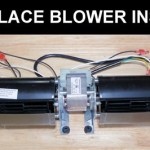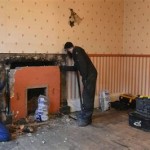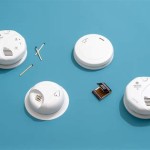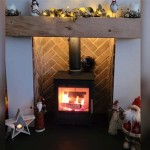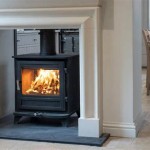Modern Open Fireplace: A Synthesis of Tradition and Contemporary Design
The open fireplace, a primal source of warmth and gathering, has undergone a significant transformation in modern design. While retaining its inherent charm and allure, the modern open fireplace incorporates innovative technologies and aesthetic principles, resulting in a captivating blend of traditional functionality and contemporary style. This article explores the key features, design considerations, and practical aspects of the modern open fireplace.
Key Features of Modern Open Fireplaces
Modern open fireplaces are characterized by several defining features that distinguish them from their traditional counterparts. These features often prioritize efficiency, aesthetics, and ease of use. One of the most noticeable differences is the incorporation of cleaner-burning technologies. Older open fireplaces were notoriously inefficient, releasing significant amounts of smoke and particulate matter into the environment. Modern designs, however, often integrate features like improved combustion air systems and catalytic converters to reduce emissions and improve overall air quality.
Another key feature is the use of high-quality, durable materials. Traditional fireplaces were often constructed from brick or stone, which are still common choices, but modern designs also incorporate materials such as stainless steel, cast iron, and reinforced concrete. These materials provide enhanced structural integrity, heat resistance, and longevity, ensuring that the fireplace can withstand the rigors of regular use for many years. The choice of materials also contributes significantly to the overall aesthetic, allowing for a wider range of design possibilities.
Furthermore, modern open fireplaces often feature simplified maintenance routines. Traditional fireplaces could be quite cumbersome to clean, requiring regular removal of ash and soot. Modern designs, conversely, often incorporate features like removable ash pans, simplified flue cleaning systems, and readily accessible components for maintenance and repair. This focus on ease of use makes the modern open fireplace a more appealing option for homeowners who appreciate the ambiance of a fire but prefer a low-maintenance appliance.
Finally, modern open fireplaces are frequently designed with integrated safety features. These can include spark screens, tempered glass enclosures, and automatic shut-off mechanisms to prevent accidental fires and ensure the safety of occupants. Such features are particularly important in homes with children or pets, or in areas prone to wildfires. These safety measures provide peace of mind without compromising the visual appeal of the open flame.
Design Considerations for Modern Open Fireplaces
Designing a modern open fireplace requires careful consideration of several factors, including the architectural style of the home, the spatial layout of the room, and the desired aesthetic. The fireplace should seamlessly integrate with the surrounding environment, complementing the existing décor and enhancing the overall ambiance of the space. One of the primary design considerations is the placement of the fireplace. The location should be chosen carefully to maximize its impact and ensure that it can effectively distribute heat throughout the room. Factors to consider include the orientation of the room, the proximity to seating areas, and the availability of adequate ventilation.
Another key aspect of fireplace design is the choice of materials. The materials should not only be durable and heat-resistant but also aesthetically pleasing and compatible with the overall design scheme. For example, a modern minimalist home might benefit from a fireplace clad in sleek stainless steel or polished concrete, while a more rustic home might be better suited to a fireplace made from natural stone or reclaimed wood. The materials should also be chosen to complement the colors and textures of the surrounding walls, floors, and furniture.
The size and shape of the fireplace are also important design considerations. The dimensions of the fireplace should be proportional to the size of the room, and the shape should be chosen to enhance the overall aesthetic. Modern open fireplaces come in a wide variety of shapes and sizes, ranging from small, freestanding units to large, built-in installations. The choice of shape can have a significant impact on the visual appeal of the fireplace, with options including rectangular, square, circular, and even custom-designed shapes.
Furthermore, the design should also consider the integration of accessories and features. Modern open fireplaces can be customized with a variety of accessories, such as mantels, hearths, and decorative surrounds. These accessories can be used to enhance the visual appeal of the fireplace and create a unique focal point in the room. The design should also consider the integration of functional features, such as storage for firewood, built-in lighting, and integrated ventilation systems. These features can enhance the convenience and usability of the fireplace, making it a more practical and enjoyable addition to the home.
Finally, the design should comply with all applicable building codes and safety regulations. This is particularly important for open fireplaces, which can pose a fire hazard if not properly installed and maintained. The design should ensure that the fireplace is properly ventilated, that the flue is adequately sized, and that all combustible materials are kept a safe distance from the firebox. It is also important to consult with a qualified professional to ensure that the fireplace is installed correctly and that it meets all safety requirements.
Practical Aspects of Owning a Modern Open Fireplace
Owning a modern open fireplace involves several practical considerations, ranging from fuel selection and storage to maintenance and safety. Understanding these aspects is essential for ensuring the safe and efficient operation of the fireplace and for maximizing its lifespan. One of the most important practical considerations is the choice of fuel. While traditional fireplaces often burned wood, modern open fireplaces can also be fueled by gas or propane. Wood-burning fireplaces require a reliable source of dry, seasoned wood, which must be stored properly to prevent rot and infestation. Gas and propane fireplaces, conversely, require a connection to a gas line or propane tank, which must be installed and maintained by a qualified professional.
Another practical aspect is the maintenance of the fireplace. Regular cleaning is essential for preventing the buildup of soot and ash, which can reduce the efficiency of the fireplace and pose a fire hazard. Wood-burning fireplaces require regular removal of ash from the firebox and cleaning of the flue to prevent creosote buildup. Gas and propane fireplaces require periodic inspection of the burner and pilot light to ensure that they are functioning properly. It is also important to inspect the chimney or flue regularly for cracks or damage, which can compromise the safety of the fireplace.
Safety is a paramount concern when operating an open fireplace. It is essential to follow all safety guidelines and precautions to prevent accidental fires and ensure the safety of occupants. This includes keeping combustible materials a safe distance from the firebox, using a spark screen to prevent embers from escaping, and never leaving a fire unattended. It is also important to have a working smoke detector and carbon monoxide detector in the home to alert occupants in the event of a fire or carbon monoxide leak.
Furthermore, the operation of an open fireplace can have environmental implications. Wood-burning fireplaces can contribute to air pollution, particularly in areas with poor air quality. Gas and propane fireplaces, while cleaner-burning, still release emissions into the atmosphere. It is important to choose a fuel source that minimizes emissions and to operate the fireplace in a responsible manner. This includes burning only dry, seasoned wood, using a fireplace insert or catalytic converter to reduce emissions, and limiting the frequency and duration of fires.
Finally, compliance with local regulations and ordinances is essential. Many municipalities have regulations governing the installation and operation of open fireplaces, including restrictions on burning during certain times of the year or during periods of high air pollution. It is important to check with local authorities to ensure that the fireplace complies with all applicable regulations and that any necessary permits are obtained.

Contemporary Fireplace Surrounds And Mantels Ideas Direct Fireplaces

20 Of The Most Amazing Modern Fireplace Ideas Contemporary Designs

Amazing Modern Fireplace Designs For A Cosy Orangery This Winter Westbury Garden Rooms

A Modern Fireplace As Centrepiece For The Home Modus Fireplaces

Gas Stove Or Open Fire What S Best For Me Chesneys

Unveiling The 63 Best Modern Fireplace Design Ideas Luxury Interior

Open Fireplace Designs Fire Place Wood Burning Fires

Gas Fireplace Urban 5 2 Metalfire Architectural Fireplaces Contemporary Open Hearth Rectangular

Fireplaces Chesneys

Unveiling The 63 Best Modern Fireplace Design Ideas In 2024 Chalet
Related Posts

